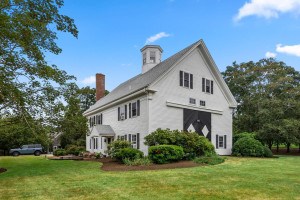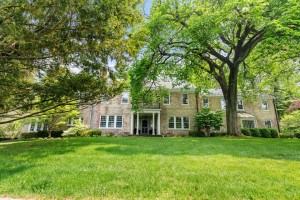Why Some Boston Brownstones Have Purple Windows

A violet-tinted window in Beacon Hill. / Photo by Kevin Jarrett on Flickr/Creative Commons
Taking a stroll through the grand old city of Boston involves a lot of architectural marveling, and maybe some jaywalking. For those who do more of the prior, you might have noticed purple-tinted glass windows in the old brownstones of Back Bay and Beacon Hill. (If you haven’t, take a moment during your next walk to look up for a minute.)
The purple windows, known as Lavenders, are typically found in buildings from the mid-1800s, but these windows don’t incorporate violet hues for stylistic reasons—they were actually a mistake. When the glass for the windows was imported from Europe, it was crystal clear. But after the windows were installed, their exposure to sunlight resulted in a purple tint. The phenomenon was later found to be due to excess manganese oxide in the glass, much to the building owners’ dismay.
An excerpt from the 1919 Architectural Record noted the inhabitants’ grief:
The glass was imported from abroad, some authorities say France, and upon its arrival it was perfectly colorless. After being set and exposed to the sun it began to turn violet causing much discussion and so much dissatisfaction that people refused to buy any more of it.
While brownstone dwellers were unhappy at the time, the purple panes have become a status symbol of sorts, perhaps in part to the color’s connotation of royalty. As Robert Shackleton puts it best in Book of Boston, “One wonders if there is some subtle and subconscious connection between the ideas of purple glass and blue blood; at any rate, the owners have all the sense of living in the purple.”
So then, the next time you find yourself turning pink with envy, just know the blue bloods of Beacon Hill never intended for their windows to be purple. It was all actually a chemistry-fueled accident.


